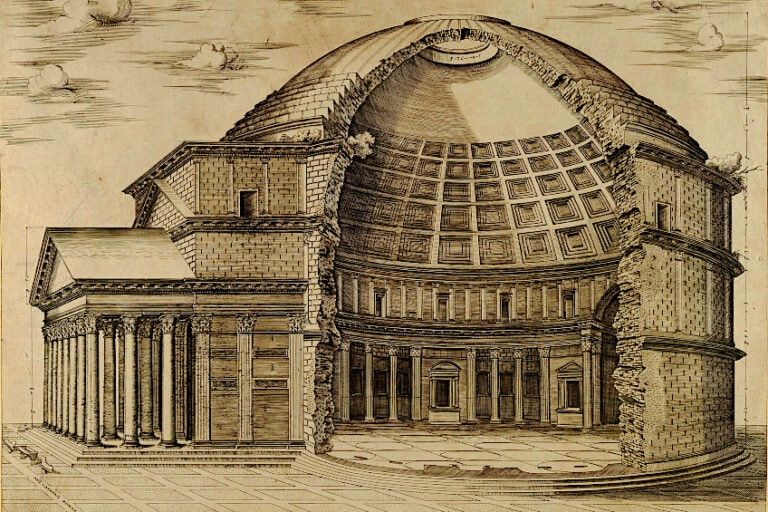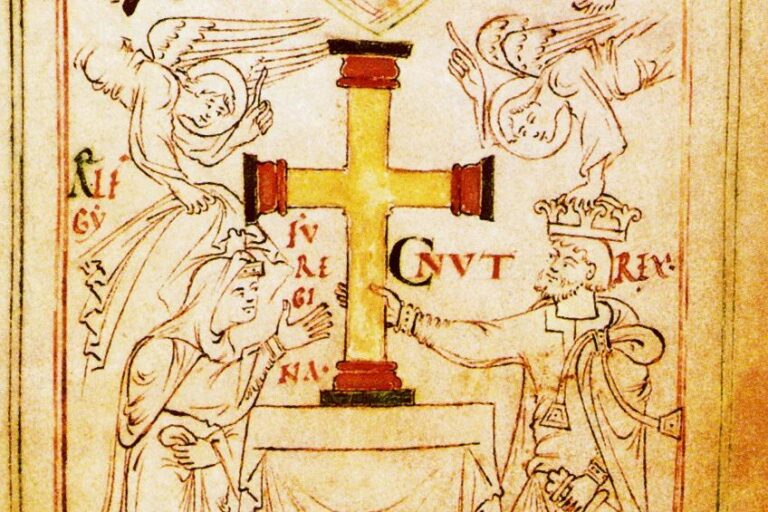Notre Dame Cathedral Sarcophagus – Uncovering Hidden History
We often think we have discovered all there is to know about the old buildings that can be found in cities across the globe. That is until something happens that unexpectedly reveals something new to us, rewriting history as we know it. This occurred recently again with the unearthing of a lead sarcophagus under Notre Dame Cathedral during reconstruction work following the devastating fire of 2019. Experts will soon reveal what is inside the Notre Dame Cathedral sarcophagus, which will provide a deeper insight into this iconic structure’s past.
Uncovering the Notre Dame Cathedral Sarcophagus
A lead casket discovered under the floor of Paris’s Notre Dame Cathedral has sparked much debate about its contents. After the terrible fire in 2019, archeologists were enlisted to assist in the restoration and conservation of the building. The archaeologists were positioned in the cathedral to assure that the church’s delicate floor was not destroyed during the initial survey of the damage. The Notre Dame Cathedral sarcophagus was discovered among numerous tombs beneath the central point where the transept joins the nave of the iconic 12th-century structure. The lead sarcophagus under Notre Dame was excavated, and despite several cracks, archeologists found that it was in decent condition.
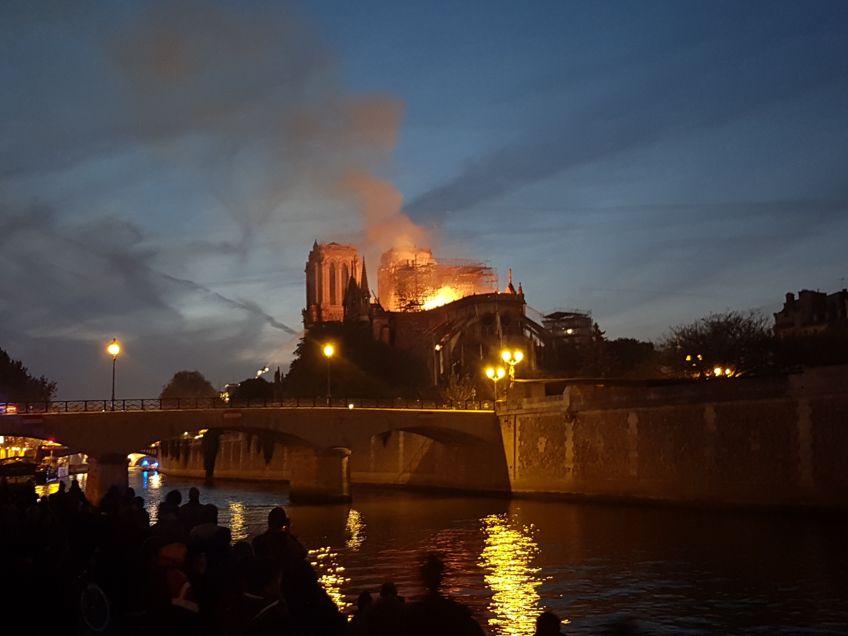 The Notre Dame Fire (2019); Baidax, CC BY-SA 4.0, via Wikimedia Commons
The Notre Dame Fire (2019); Baidax, CC BY-SA 4.0, via Wikimedia Commons
The Fire at Notre Dame Cathedral
On the 15th of April, 2019, a fire broke out beneath the rafters of Notre Dame Cathedral’s roof. The spire and much of the roof were consumed by the fire. The fire started at 6:30 p.m. and raged until the following day. Fortunately, firemen were able to put out the fire, protecting the main building as well as the rose windows and bell towers. Nobody was hurt, and the Catholic relics and precious works of art stored in the cathedral were saved and taken to safety.
Following the fire, there was an outflow of worldwide assistance, with offers totaling hundreds of millions of dollars throughout the course of the restoration.
Friends of Notre Dame de Paris generated $10.6 million in 2019 alone from over 10,600 supporters in the United States and over 50 countries other than France. However, there is still a lot of work that must be done. The timescale for reconstruction and the total amount required is still being worked out. Before the rebuilding is completed, they must also establish an endowment to assist support the care of Notre Dame Cathedral and prevent future degradation.
The Discovery of the Lead Sarcophagus Under Notre Dame
In March 2022, workmen unearthed a well-preserved lead coffin submerged roughly one meter beneath the floor of Notre Dame Cathedral’s fire-damaged tower. The discovery was made only one day before the three-year commemoration of the horrific fire that ravaged the 850-year-old cathedral in Paris. During the fire, the vaulted ceiling collapsed to the floor, revealing a 19th-century heating system and a succession of levels beneath. These levels housed the sarcophagus, as well as other items recovered, such as painted statues. Researchers estimate the uncovered coffin dated from the 14th century. According to NPR, plant debris was also discovered, implying that the innards of the coffin were well-preserved and encased with timber from a boxwood tree. The corpses of France’s upper crust were preserved using boxwood trees.
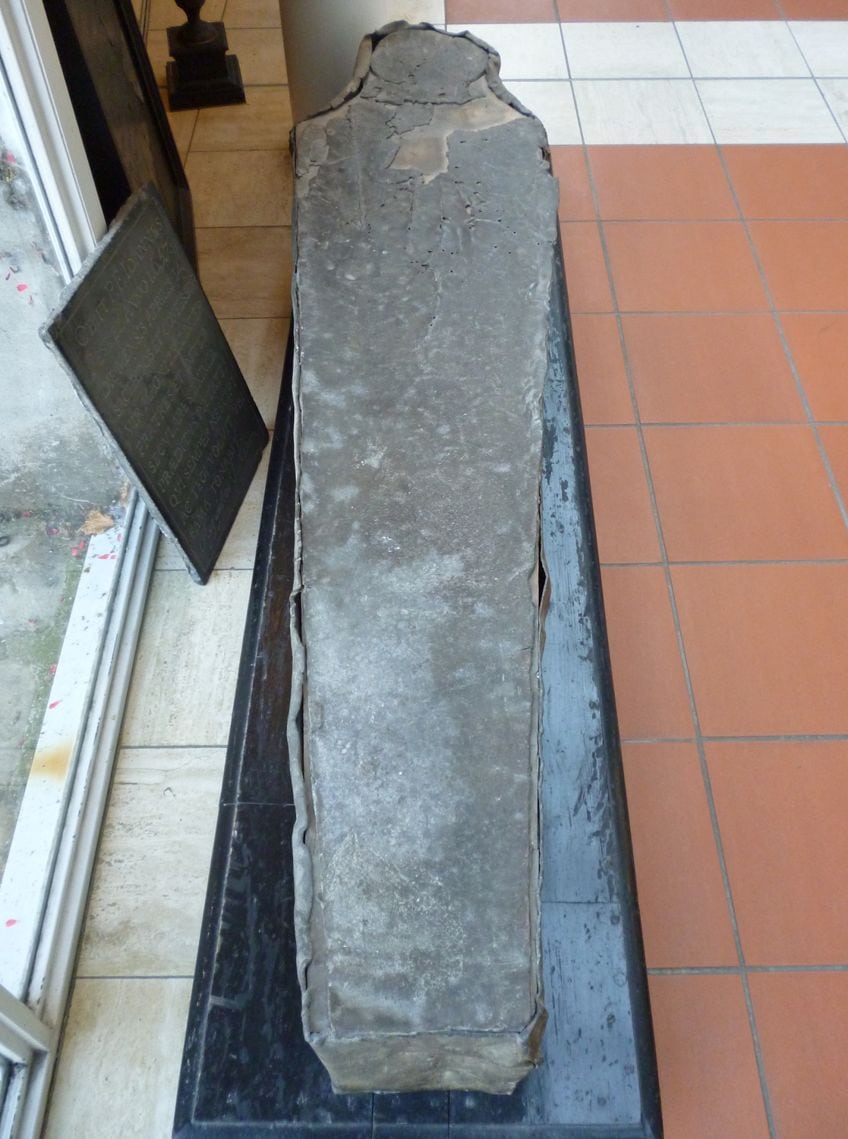 The Lead Sarcophagus of Judith de Bretagne (2012); musée des Beaux-Arts de Bernay, CC0, via Wikimedia Commons
The Lead Sarcophagus of Judith de Bretagne (2012); musée des Beaux-Arts de Bernay, CC0, via Wikimedia Commons
Medieval Origins of the Notre Dame Cathedral Sarcophagus
“If it is an actual casket from the Dark Ages, we are working with an incredibly unusual burial technique”, said an archaeologist from INRAP (the National Institute for Preventive Archaeological Research), Christopher Besnier, at a news conference on the 14th of April 2022. Besnier stated that other lead sarcophagi were unearthed in French cathedrals by 19th-century restorer and architect, Eugene Viollet-le-Duc, however, he claimed that they were more recent, having been discovered with a burial plate used for identifying the dead.
“We do not have a funerary plate present, and the date is still a guess; it’s from the 14th century or later”, Besnier explained.
He stated that his team at INRAP will soon reopen the coffin to identify the gender and prior health status of the corpse and that carbon-dating technology may be employed. So far, they have used an endoscopic camera to see into the Notre Dame sarcophagus. The top half of a skeleton, a cushion made of leaves, cloth, and unidentifiable artifacts have all been discovered. It’s the beginning of what might be a treasure trove of knowledge on the medieval past of the cathedral.
Social Status of the Corpse
Anyone interred in such a prestigious spot was most certainly a member of the Paris aristocracy. “We’re not just anywhere; we’re on the Seine Island, at Notre Dame Cathedral”, Besnier remarked. Given the qualities and position of the sarcophagus, the burial of a senior dignitary is likely. The sculpted parts discovered at the site were recognized as belonging to an antique rood screen – the ornamental divider at the entrance of the church – that was created about 1,230 CE and demolished at the start of the 18th century.
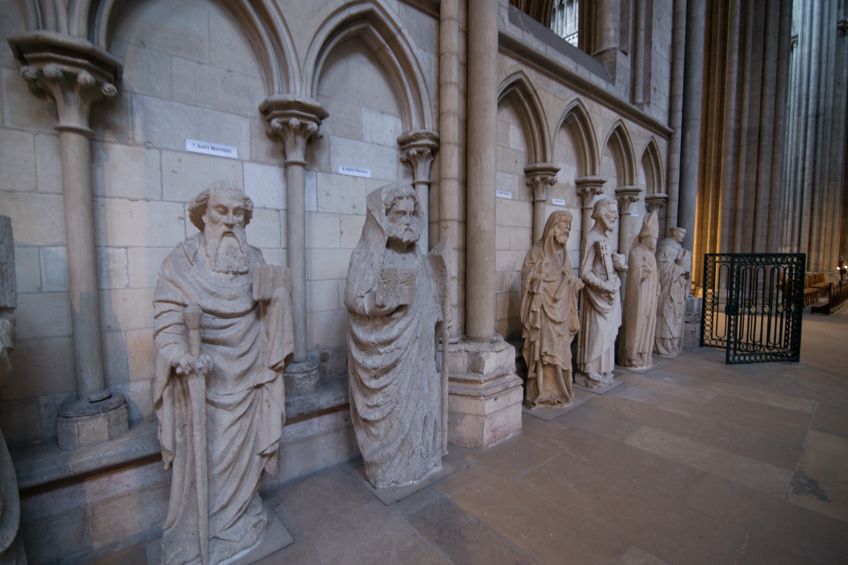 Sculptures in the Notre Dame Cathedral (2014); Jorge Láscar from Melbourne, Australia, CC BY 2.0, via Wikimedia Commons
Sculptures in the Notre Dame Cathedral (2014); Jorge Láscar from Melbourne, Australia, CC BY 2.0, via Wikimedia Commons
Viollet-le-Duc discovered further shards of this screen, which is currently on exhibit in the Louvre Museum in Paris. “It is thus a discovery of tremendous curiosity”, the ministry stated. The INRAP group also unearthed a stone statue of a human head that resembles Jesus, as well as beautiful stone shards with paint traces. “We discovered all of these treasures barely 10-15 cm beneath the floor slabs”, Besnier remarked. “It was entirely unexpected. There were outstanding items illustrating the monument’s history”. He described the finding as “an emotional experience”.
Debates About Opening the Coffin by the Public
Many individuals on social media are advocating for the sarcophagus to be left closed, claiming – frequently in jest – that disturbing the sacredness of the deceased will release demonic spirits. Some suggested that Stephen King’s horror novels, especially Pet Sematary (1983), should serve as a caution not to unleash the undead.
“What aspect of a ‘human-shaped lead coffin’ hidden under a church’s sacred ground doesn’t just scream DO NOT OPEN to them? Do they want to witness an ancient mummy?” read one tweet.
Dominique Garcia, the head of INRAP, said that the analysis of the body will be “in accordance” with French legislation on the handling of human remains. He stated, “A body is not an archaeological item. The civil standards apply to human remains, and archaeologists will examine them as such”. However, there is a long history of dealing with remains and sarcophagi that goes back to the discovery of the Egyptian pyramids, which has dramatically increased our understanding of ancient Egyptian culture and its practices. Hopefully, the examinations carried out at the Notre Dame Cathedral will be both respectful of the past and reveal its secrets in the present, providing a clearer understanding of the future.
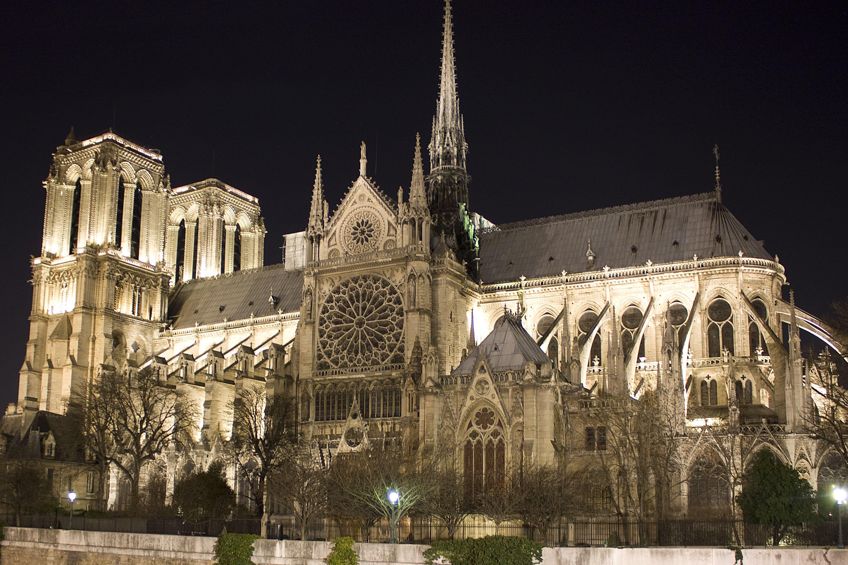 Notre Dame Before the Fire (April 2019);Cayobo from Key West, The Conch Republic, CC BY 2.0, via Wikimedia Commons
Notre Dame Before the Fire (April 2019);Cayobo from Key West, The Conch Republic, CC BY 2.0, via Wikimedia Commons
The fire at Notre Dame was an undoubtedly tragic event. However, the community of Notre Dame lovers across the world pulled funds together to help see the iconic edifice restored back to its former glory. In doing so, they inadvertently uncovered a lead sarcophagus under Notre Dame’s floors. Considering that the church is a highly respected and revered structure, the person who was interred there must have been an extremely important individual. Their identity, and the other secrets the sarcophagus contains, however, are yet to be revealed.
Frequently Asked Questions
How Was the Lead Sarcophagus Under Notre Dame Discovered?
Repair workmen at Paris’s Notre Dame Cathedral, which sadly caught fire in 2019, uncovered an old section full of graves, including a fully intact, human-shaped lead coffin. The coffin was buried beneath the central nave, where workers were constructing foundation trenches for the framework needed to rebuild the cathedral’s ceiling and spire, which had fallen during the blaze. Along with the coffin and tombs, archaeologists also discovered painted figurines such as a bust of an unknown man with a beard, sculpted vegetables, vestiges of the initial 13th-century rood screen, and remnants of a 19th-century cinder block pipe subsurface heating system.
What Happened to the Notre Dame Cathedral in 2019?
A fire started beneath the roof rafters of Notre Dame Church on the 15th of April, 2019. The blaze destroyed the spire and a large portion of the roof. The fire broke out at 6:30 p.m. and burned all night long. Thankfully, firefighters were able to extinguish the fire, saving the main structure. The priceless artwork and religious artifacts kept in the cathedral were preserved and transferred to safety, and nobody was injured.
What Is in the Notre Dame Cathedral Sarcophagus?
Archaeologists believe the person within was likely a high dignitary who was interred in the 14th century, almost a century after the cathedral’s construction. The body inside looks to be fully mummified. On top of the head, you can see bits of cloth, hair, and a cushion made of leaves – a well-known occurrence when religious dignitaries were interred. The body could be in excellent conservation condition if these plant components are still present within. The sarcophagus is yet to be opened, but when it is, it will surely offer pieces of the cathedral’s history that have been buried for centuries.

I am deeply passionate about history and am constantly fascinated by the rich and complex stories of the past. As the editor-in-chief of learning-history.com, I have the opportunity to share this passion with a wide audience through the creation and distribution of engaging and informative content about historical events, persons, and cultures. Whether it’s through writing articles and blog posts or creating videos or podcasts, I strive to bring the past to life in a way that is both accurate and enjoyable. My expertise in history, combined with my strong writing and communication skills, allows me to effectively communicate complex historical concepts and make them accessible and interesting to a wide range of readers. I am truly grateful for the opportunity to share my love of history with others through my work on learning-history.com.


